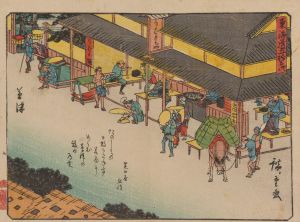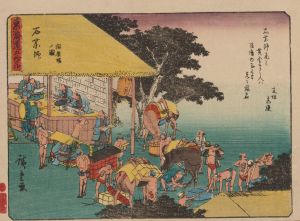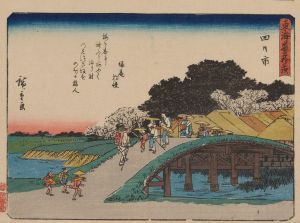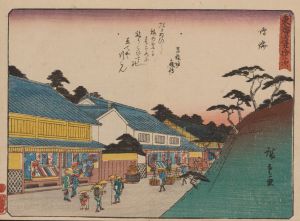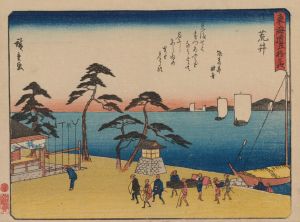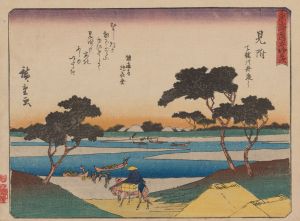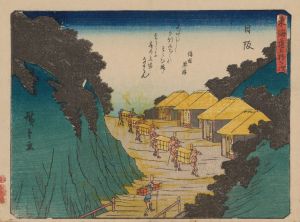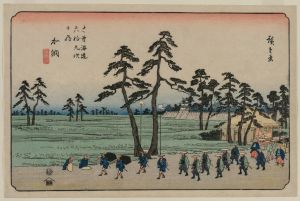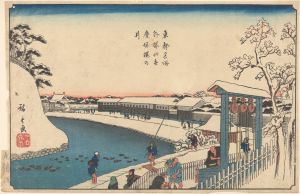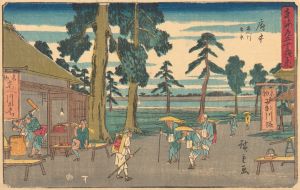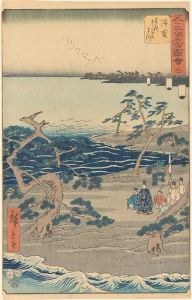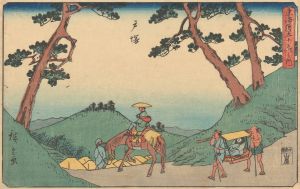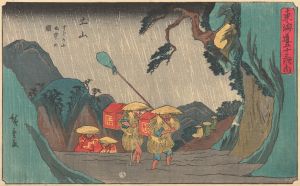
Tokaido gojusantsugi, Pl.52
A hand-painted replica of Andō Hiroshige’s masterpiece Tokaido gojusantsugi, Pl.52, meticulously crafted by professional artists to capture the true essence of the original. Each piece is created with museum-quality canvas and rare mineral pigments, carefully painted by experienced artists with delicate brushstrokes and rich, layered colors to perfectly recreate the texture of the original artwork. Unlike machine-printed reproductions, this hand-painted version brings the painting to life, infused with the artist’s emotions and skill in every stroke. Whether for personal collection or home decoration, it instantly elevates the artistic atmosphere of any space.
Andō Hiroshige, a renowned Japanese ukiyo-e artist of the Edo period, is celebrated for his landscape prints and his series "The Fifty-three Stations of the Tōkaidō" (Tōkaidō Gojūsan-tsugi). This series, created between 1833 and 1834, is one of Hiroshige's most famous works and captures the scenic beauty and cultural significance of the Tōkaidō road, which was the main travel and transport artery of Japan during the Edo period, connecting Edo (modern-day Tokyo) to Kyoto.
Plate 52 of this series is a notable piece that exemplifies Hiroshige's mastery in depicting landscapes and his ability to convey the atmosphere of a particular location. Each print in the series represents one of the 53 post stations along the Tōkaidō, plus the starting point at Nihonbashi in Edo and the endpoint in Kyoto, making a total of 55 prints. These stations were crucial for travelers during the Edo period, providing lodging and services along the journey.
Hiroshige's work is characterized by its use of vibrant colors, attention to detail, and the ability to capture the transient effects of light and weather. His prints often include travelers, merchants, and local inhabitants, providing a glimpse into the daily life and culture of the time. The landscapes are not only artistic representations but also serve as historical documents that offer insights into the geography and infrastructure of Edo-period Japan.
The Tōkaidō series was highly popular in its time and remains influential, showcasing Hiroshige's innovative compositions and his skillful use of perspective. His work had a significant impact on Western art, particularly on the Impressionists, who admired his ability to capture the essence of a scene with economy and elegance.
Hiroshige's prints were produced using the ukiyo-e technique, which involved woodblock printing. This method allowed for the mass production of images, making art more accessible to the general public. The prints were typically made on mulberry paper, and the process involved multiple steps, including the carving of separate blocks for each color used in the print.
The Tōkaidō road itself was an essential part of Japan's infrastructure, facilitating not only travel and trade but also cultural exchange. It was a route frequented by samurai, merchants, pilgrims, and tourists, each contributing to the vibrant tapestry of life that Hiroshige captured in his prints.
Hiroshige's work, including Plate 52, continues to be celebrated for its artistic merit and historical significance. His ability to blend realism with an idealized vision of nature has left a lasting legacy, influencing not only Japanese art but also artists around the world. The Tōkaidō series remains a testament to Hiroshige's genius and his profound connection to the landscapes of Japan.





